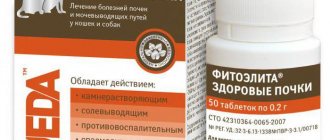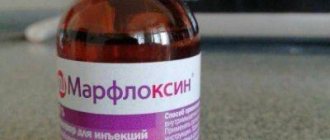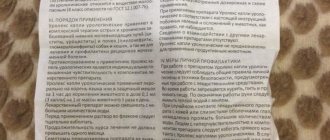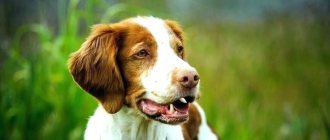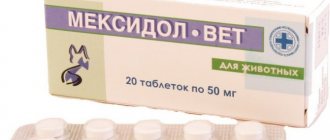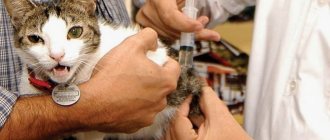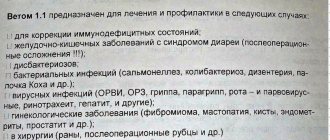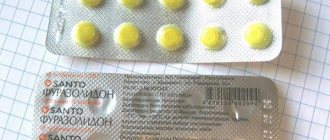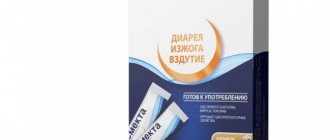Animal care
Most often, infection occurs through contact with an infectious individual, but even cats that have never left the house can also become ill. Fungal spores can penetrate indoors on people’s shoes and clothes. If your pet's skin has microtraumas, scratches or diaper rash, the risk of developing a fungal infection increases many times over. The development of pathology can be provoked by the following factors:
- young age;
- weakening of the body of pregnant and lactating females;
- low immunity in the presence of viral infections;
- incorrect diet;
- for some chronic diseases.
As a rule, the upper layers of the skin become their habitat. The disease manifests itself as peeling of the skin, dullness and hair loss, and the appearance of an unpleasant odor. Without treatment, non-healing wounds occur, the animal becomes weak and loses weight. But the main danger is that fungal diseases are transmitted to humans, and children are especially susceptible to infection.
Do not allow a treated cat or dog to lick the medication from its fur! For these purposes, you can use a collar, which can be removed half an hour after treatment. If the animal is actively trying to get rid of the protective device, you can inject it with a mild sedative after consulting a doctor. If you have several animals, the sick cat should be isolated.
After treatment with Fungin it is necessary:
- Monitor your pet for several days.
- If you feel weak and refuse to eat, inform your veterinarian - drug poisoning may have occurred.
- In case of indigestion and lethargy, remove the product from the skin and stop using it.
- You should not bathe your cat to maintain the therapeutic effect of the drug.
Features of the use of the drug Fungin Forte for cats
The drug Fungin Forte is used only as prescribed by a doctor. No negative symptoms of impact on the pet’s health have been identified if the instructions are followed. In some cases, the animal may become sensitive to any components of the drug, which may result in skin irritation. In this situation, the drug is washed off with water using a tampon, and the animal is given an antihistamine.
How to apply the medicine correctly
- For better effects of the drug, it is advisable to cut the hair from the affected area of the skin.
- Application is done either with a cotton pad or directly dripped onto the affected area using a dropper or spray. The liquid is gently rubbed into the skin, initially treating the border of the lesion and capturing about one centimeter of healthy skin. The treatment is then moved to the center of the spot.
- After applying the drug, it is necessary to take measures to prevent the animal from licking it for twenty minutes; for this you can use a collar. If there are several animals in the house, they need to be isolated.
- This procedure is carried out once or twice a day according to the recommendation of the attending physician until complete recovery, which is determined only by the results of laboratory tests of skin particles.
During the treatment procedure, carefully observe the rules of personal hygiene, and then wash your hands thoroughly with soap. If the drug gets on the mucous membranes, rinse them well with plenty of water. If you are allergic to the components of Fungin Forte, it is advisable to use gloves to protect your skin.
The duration of the course should not exceed fifteen days.
Limitations in use
Fungin Forte cannot be used for the following categories of pets:
- kittens under four months;
- weakened and elderly pets;
- pregnant and lactating females.
Compatibility of Fungin Forte with other drugs
In difficult cases of the disease, the veterinarian may prescribe additional drugs for symptomatic therapy. It should be borne in mind that Fungin Forte cannot be combined with medications based on corticosteroid hormones, for example, with a drug such as Dexamethasone.
Features of the treatment of fungal diseases
Treatment of fungal diseases is complicated by the persistence of spores of this infection in the environment. If your pet is sick, you need to check everyone living in the house for the presence of the disease. As a preventive measure, animals that are not sick can be bathed using medicated shampoo. The house needs complete disinfection, fabric products need to be washed, if possible with the addition of whiteness; It is advisable to treat carpets and furniture with steam with the addition of chlorhexidine; disinfect all items related to caring for your pet: toys, house, comb.
After completing a course of treatment, you need to be especially attentive to your pet, as a relapse of the disease is possible due to the difficulty of dealing with its carriers.
Instructions for use
The use of Fungin for cats is possible only externally; the drug should not be allowed to come into contact with the surface of the mucous membranes, as this leads to very severe irritation.
If cats show signs of lichen or other skin disease, doctors recommend using Fungin. Timely use of the drug will significantly speed up the animal’s recovery and improve the condition of its skin.
The use of Fungin in the form of a solution is allowed in case of fungal infections on the face and back of the body. In this case, the effect on the mucous surfaces and eyes of the animal will be minimal.
The use of the drug is unacceptable without consultation with a specialist . The veterinarian must do tests, make an accurate diagnosis and only then prescribe proper treatment.
If an animal has been diagnosed with microsporia or trichophytosis, the drug can be used in the dosage specified in the instructions. If lichen is detected, treatment should be prescribed individually . This is due to the fact that different forms of the disease may require the prescription of a specialized drug, and Fungin will be useless in this situation. The doctor must also determine the severity of the disease.
Before using the drug, you should first prepare the skin . To do this, the hair around the affected area is carefully trimmed, capturing one centimeter around it. There is no need to shave the fur, as this can lead to injury to the damaged area and infection of the wound.
To treat the affected area, if it is small in size, use a cotton pad or gauze swab. To treat large areas of the skin, it is recommended to use a spray that is sprayed over the surface of the cat's skin . When using the medicine, you need to hold the cat tightly, it should not escape and carefully ensure that the animal does not lick the medicine. For these purposes, it is recommended to use a special collar.
The solution and Fungin spray are used at the rate of 0.2 ml per kilogram of animal body weight . The drug is applied in the direction from the edges of the damaged surface to the center, covering about 1 centimeter of the healthy surface. After using Fungin, your pet should not be bathed for 24 hours.
The drug is used once a day until complete recovery. Usually the course of treatment is 10–15 days. The veterinarian should then take a control scraping. If a fungus is detected, treatment may be extended.
Indications for use of ointments
Skin lesions in animals can be fungal or viral in nature. The most common ringworm in cats is caused by the pathogenic fungi Trichophyton and Microsporum. Other, less common varieties of lichen include:
- pink (viral in nature);
- red flat (etiology unclear);
- multi-colored (pityriasis) (fungal nature);
- weeping (eczema).
Ointments of various types can be used to treat any of these types of diseases, except pityriasis rosea. No specific treatment has been developed for it. Your cat needs good nutrition and a healthy immune system. A symptom of this type of disease is a multitude of pink spots located throughout the body, which over time become yellowish. Wrinkles on the skin begin to appear in the affected areas.
The ointment is an effective remedy for the most common type of lichen - ringworm. A fungal infection most often affects the face, the area behind the ears, paws and tail. In some areas, the skin begins to become covered with scales and peel off, and baldness in the affected area is observed (as if six were cut off). If a pet owner notices such abnormalities on the skin, it is necessary to immediately begin treatment, since the disease causes severe discomfort to the animal. The fungus can quickly spread on surfaces and be transmitted to humans, so it is advisable to isolate the cat from children (who have not yet developed immunity to fight the fungal infection).
If the disease cannot be cured with local medications, then the help of a specialist will be required. The veterinarian may decide to prescribe oral medications. Most often they are used in severe or severely advanced cases.
Important! Treatment of lichen with any tablets is prohibited for pregnant and lactating cats and kittens
Instructions for use
The medicine is intended for cats and dogs
who have developed symptoms of infection with the following skin diseases:
- microsporia;
- trichophytosis (ringworm).
When using the drug, it is important to follow the recommendations described in the package insert for each package. How to use the medicine:
- the solution should be dosed at the rate of 0.2−0.3 ml per 1 kilogram of animal weight;
- a piece of folded gauze or cotton wool should be soaked with the required volume of medicine;
- Next, the solution is applied to diseased areas of the skin;
- the medicine is rubbed in from the edge to the center, while covering 1-2 cm of healthy, unaffected skin.
This procedure should be repeated once a day for one and a half to two weeks. Therapy ends only when the owner sees that the animal is completely healthy. The pet’s condition can be determined both visually and in the laboratory conditions of a veterinary clinic, where the doctor will analyze scrapings from former affected areas.
If the disease is hopelessly advanced and has a severe course, then other medications are added to the treatment with Fungin that will fight the symptoms.
Varieties
There are several main types of ointments that are used to eliminate dermatological diseases:
- antifungal;
- zinc;
- sulfuric;
- salicylic;
- tar.
Antifungal agents are the basis for the treatment of lichen of fungal origin. The most popular drugs include Clotrimazole and Miconazole. They have a wide spectrum of action against various pathogenic fungi. The active substance destroys the elements of the fungal shell and suppresses cellular activity.
Zinc ointment for lichen in cats is an excellent medicine at the initial stage of the disease. Its composition is based on zinc oxide and regular petroleum jelly. It has an anti-inflammatory effect, prevents the spread of infection, has a drying property, and accelerates the regenerative processes of the skin. However, it only affects the upper layer of the epidermis, so for deeper lesions additional medications will be required.
An external remedy with zinc can be used for ringworm, multicolored lichen, and eczema. The medicine is applied to previously cleaned affected areas 5-6 times a day until the pet is completely cured.
Sulfur ointment for lichen in cats is effective for pathologies of viral and fungal origin. It consists of a mixture of precipitated sulfur, petroleum jelly and an emulsifier. The medicine is produced in various volumes and concentrations of the active substance. The higher the percentage of sulfur in the drug, the deeper the medicine will penetrate into the skin. Therefore, it is rational to use it for a disease that has penetrated into the deep layers of the epidermis. The drug has an antimicrobial effect, eliminates itching, and accelerates the wound healing process.
Another popular treatment for ringworm is salicylic acid ointment. It also has different volumes and concentrations of the active substance (2, 5, 10%). Shows high effectiveness in the fight against weeping lichen. The product has high antimicrobial and antiseptic properties, helps restore the skin.
Tar ointment contains wood processing products. Natural components have antiseptic, anti-inflammatory and antiparasitic properties. The product helps reduce itching and relieve redness. It is effective for a variety of dermatological pathologies and can be combined with sulfur and salicylic acid preparations.
You can now see the current price of ointments for lichen and buy them right here:
Spray "Fungin": instructions for use
When using a veterinary product, you must strictly follow the instructions. It shows the procedure:
- The first thing to do is to ensure maximum access to the affected area. If necessary, cut off interfering hair.
- Then you need to spray the spray over the area where the fungus is located.
- When applying the drug, you should also include healthy skin around the infected area (about one centimeter from the edge). This will prevent the fungi from spreading further.
- Rub the medication into the skin with light movements.
- Treatment is carried out twice a day until the symptoms of the disease completely disappear. You should know that the course should not exceed 15 days.
After completing therapy, you must contact your veterinarian and take repeated tests to confirm the absence of fungi. In severe cases of the disease, Fungin Forte spray is used in combination with other medications that can only be prescribed by a specialist.
Side effects of the medicine
When using the drug in prescribed doses, they are not observed. However, some signs may occur due to individual intolerance to the components of the medicine by the pet. In this case, there is a possibility of skin irritation. If such a phenomenon is detected, the intake is stopped, and the applied solution is removed with a swab, then washed off with water from the skin of the animal.
Side effects occur due to an overdose of the active substance; in these cases, cats experience:
- allergic reactions on the skin;
- depressed state;
- increased salivation;
- gastrointestinal disorders.
If such symptoms cannot be eliminated by refusing to take or remove the solution from the cat’s skin, the veterinarian will prescribe symptomatic and desensitizing medications.
Note! Increased salivation (hypersalivation) is possible when using the solution for the first time. However, it passes quickly and is not a negative effect of the medicine on the body of a domestic cat.
Mechanism of action and therapeutic efficacy
When applied topically, molecules of active substances accumulate in the stratum corneum of the skin, hair follicles, and sebaceous glands. The therapeutic effect is achieved due to the action of the main components:
- terbinafine - depending on the concentration, exhibits a fungicidal or fungistatic effect. Due to its high lipophilicity, terbinafine molecules accumulate in the stratum corneum of the dermis, hair follicles, and sebaceous glands. When applied topically, the drug penetrates into the systemic circulation to a small extent. The substance causes the accumulation of harmful compounds in the cells of pathogenic microorganisms and the death of fungi;
- Thiabendazole – active against dermatophytes. The mechanism of action is to disrupt the synthesis of nutrients in fungal cells and destroy the cell wall. The substance destroys fungi and prevents their reproduction.
- Metronidazole – effectively destroys bacteria. Included in the composition to prevent secondary skin infections due to ulcers and scratching;
- Dexamethasone is a synthetic hormonal drug that has anti-inflammatory and antiallergic effects. Relieves the body's increased sensitivity to allergies, suppressing an excessive immune reaction (in this case, the skin reaction) and reduces the risk of severe scarring of damaged areas. The mechanism of action is to suppress the activity of various tissue-destructive enzymes and inflammatory mediators;
- lidocaine is a local anesthetic that blocks the transmission of pain impulses along nerve fibers to the brain.
The excipients in the composition contribute to better absorption of the active components, and also have a healing and disinfectant effect.
If you follow the instructions for the medicine:
- does not have a toxic or irritating effect;
- does not contribute to allergies;
- has no toxic or mutagenic effect on the fetus.
Pharmacological properties
The drug contains several components that act on fungal microorganisms:
- Terbinafine belongs to the group of allylamine antifungal agents. Works well for dermatomycosis in animals. Destroys fungal cells, which causes their death. It acts depending on the concentration, has fungicidal (“fungus killer”), fungistatic properties, suppressing the rate of reproduction of fungal cells. The substance can accumulate in the skin, hair follicles, sebaceous glands, and practically does not penetrate into the blood.
- Thiabendazole, a class of azoles, destroys the fungal cell wall or greatly reduces their division. Works well for trichophytosis and microsporia.
- Metronidazole, which belongs to the group of nitroimidazoles, causes its death due to a number of specific chemical processes inside the fungal cell.
- Dexamethasone. It is necessary as a component that relieves inflammation on the skin, stops allergic reactions, and increases local immunity. Helps the skin fight toxins from fungal activity.
- Lidocaine. A well-known anesthetic, it has a local anesthetic effect, allowing the dog to forget about the unpleasant sensations.
Fungin belongs to hazard class 4 and, if the rules of use are followed, does not cause any unpleasant sensations. If in contact with eyes, may cause lacrimation and mild irritation.
Therefore, you need to be careful when using aerosols on your dog's face. It is not recommended to spray the dispenser without covering your eyes with your hand.
Composition and release form
Fungin for cats is a light brown liquid with a slight specific odor.
The composition of the drug includes the active substance clotrimazole and auxiliary components that have anti-inflammatory and wound-healing effects: propolis, sulfur, isopropyl alcohol, glycerin, dimethyl sulfoxide, polyethylene glycol.
Clotrimazole has an active effect on pathogenic fungal microorganisms on the skin of cats. Currently, manufacturers of veterinary drugs offer several convenient forms of the drug. The drug is presented in the form of a solution, ointment and spray. Cat owners give the greatest preference to Fungin spray.
How does Fungin work and in what cases is it prescribed?
Clotrimazole has a destructive effect on pathogenic microorganisms, destroys them and completely inhibits their growth and reproduction. The substance promotes tissue restoration, disinfects and heals the surface of wounds on the skin of an animal.
Propolis enhances the antifungal activity of clotrimazole, relieves inflammation, disinfects and heals the skin. Fungin is a low-toxic veterinary drug. If the instructions are followed, it does not have an irritating effect.
Indications for use: Fungin is used to treat lichen or trichophytosis and microsporia in cats and dogs.
Contraindications
Before using the drug, you should carefully read the instructions or consult a veterinarian, since the drug has a number of restrictions on use.
The use of the drug is not recommended if animals have individual intolerance to the components of the drug, as well as in the following cases:
- the age of the animal is less than one month;
- during pregnancy and lactation;
- animals after infectious diseases.
If the instructions are strictly followed, no complications are observed. The individual reaction of the body can manifest itself in the form of increased salivation and abnormal bowel movements.
Compound
The composition of Fungin is a complex of substances that can have a strong effect on suppressing and destroying fungal infections
in cats.
The drug contains clotrimazole, polyethylene glycol, dimethyl sulfoxide, isopropyl alcohol, glycerin, propolis.
Active ingredient : clotrimazole
has an active effect on pathogenic fungal microorganisms on the skin of cats. It is used to treat lichen, trichophytosis and microsporia. The remedy is especially effective at the beginning of the disease.
Clotrimazole has a destructive effect on pathogenic microorganisms, destroys them and completely inhibits their growth and reproduction. The substance promotes tissue regeneration
, disinfects and heals the surface of wounds on the cat's skin.
Fungin can only be used externally
, the drug should not be allowed to come into contact with the surface of the mucous membranes, as this leads to very severe irritation.
If there are signs of lichen or other skin disease, doctors recommend using fungin. Timely use of the drug will significantly speed up the animal’s recovery and improve the condition of its skin.
Currently, manufacturers of veterinary drugs offer several convenient forms of the drug. Cat owners give the greatest preference to fungin spray
. The procedure and duration of its use are clearly defined in the instructions.
The use of fungin solution is allowed if fungal infections occur on the face and back of the cat’s body. In this case, the effect on the mucous surfaces and eyes of the animal will be minimal.
Effective treatment of the disease with medication
If a cat develops lichen, how to treat it is decided by the veterinarian after conducting the necessary examinations. The choice of a specific drug depends on the degree of skin damage in the animal, the size of the lichen formations, the age and breed of the animal. The general state of health and existing diseases are also taken into account. To treat lichen in cats, drugs are prescribed in three types:
- for internal reception;
- injections;
- for external use.
Often these drugs are combined with each other to make the therapy more effective. It will take 1 to 2 weeks for the external manifestations of lichen to heal. If there is no purulent inflammation, new healthy hair will grow in a month. With a complicated form of the disease, the cat may be left with scars.
To prevent complications, you should consult a doctor at the first symptoms of lichen.
Ringworm in cats: drugs for treatment
In animals, lichen often becomes protracted, so injections and tablets are more effective in treating the disease. For oral administration, cats are often prescribed:
- Itraconazole;
- Terbinafine;
- Giseofulvin.
Medicines are given in crushed form, mixed into food. The dosage of drugs and the duration of the course are prescribed only by a doctor. You should not self-medicate, so as not to harm the animal even more.
In addition to tablets, the cat is prescribed intramuscular injections of Dermicocide. The drug is injected into the thigh 2-3 times, after which a break of 5 days is taken. The product has contraindications due to age; it cannot be injected into cats during pregnancy.
Ointments and shampoos
Ointments are effective in the treatment of weeping lichen in cats:
- salicylic ointment. Strong antiseptic, relieves inflammation and itching. The product should be applied to the areas affected by the fungus; the procedure is carried out twice a day. The treatment course lasts on average 14 days;
- ichthyol ointment. It is effective in treating fungal diseases, but it is worth considering that the animal may not like its pungent odor. Accelerates tissue restoration, destroys pathogens, relieves inflammation. The product is applied to the cat’s skin three times a day;
- tar ointment. Accelerates the healing of wounds from lichen. Therapy lasts from 1 to 1.5 weeks.
To prevent the cat from trying to lick the ointment with its tongue, you need to apply gauze folded several times to the treated area and secure it with a band-aid. In addition to ointments, shampoos against lichen are effective:
- Sebozol;
- Doctor;
- Nizoral.
Shampoos are applied to the affected areas, foamed and washed off with warm water 3 to 5 minutes after application. If the cat is still small, then it is better to check with the doctor whether the listed drugs can be used.
Shampoo must be used strictly according to the instructions.
Instructions for use
A solution of fungin forte is applied to the affected area using a pre-moistened cotton swab at the rate of 0.2-0.3 ml of liquid per 1 kg of live weight of the pet.
Regardless of whether it is a cat or a dog. Rub the medicine in a circular motion.
To prevent the cat from licking the medicine, it is recommended that she wear a special muzzle. After half an hour it can be removed. The course of treatment is one procedure per day for 10-15 days.
If the disease progresses at a particularly severe stage, other medications can be additionally used. But their appointment should be done exclusively by a veterinarian after examining the animal and making the correct diagnosis.
During treatment, you need to grab 1 cm more space around the lesion, while spreading the hair well.
When using the product, you must also observe the rules of personal hygiene. While working, you must not smoke, drink alcohol or eat food. If the solution gets on the affected area of the human body, it is recommended to wash it off with plenty of water. If an allergic reaction occurs and does not go away for a long time, you should consult a doctor. It is better to have instructions for using the medicine fungin or its label with you.
Analogues of Fungin Forte
The list of antifungal drugs for pets is not very large and not all of them can be used to treat cats. Thus, the antifungal ointment Yam BK, which contains tar, is contraindicated for cats due to their intolerance to this component.
Table: antifungal drugs for cats
| A drug. | Compound. | What is it used for? | Features of application. | Price. |
| Sanoderm ointment, Ukrainian corporation "Arterium". | It contains three active ingredients:
Auxiliary:
| Used for the following diseases:
| The course of treatment ranges from two to four weeks. Long-term use affects the functioning of the adrenal glands. Do not apply to the skin around the eyes; do not get into open wounds. | Tube 15g from 200 rub. |
| Imaverol is an American drug, it is a light brown liquid, used for external use. | Active ingredient: enilconazole -10%, selectively affects the membrane of fungal cells. Excipients (in 1g):
| It is used to treat dermatophytoses of domestic animals, including ringworm. | An emulsion is prepared based on the drug by diluting it with water in a ratio of one to fifty. This emulsion is applied to the affected areas of the skin. The course of treatment is four treatments with an interval of three days. The emulsion is applied in a thin layer against the cat's fur (it is better to cut long-haired breeds). A contraindication for use is individual sensitivity to the components. It is not recommended to combine it with other external antifungal drugs. | 100 ml bottle - about 600 rubles. |
| Dermikotsid - suspension for injections of Moscow. | Active ingredients (per 100ml):
Auxiliary:
| Used to treat ringworm. | The suspension is administered intramuscularly, the volume of the administered drug depends on the weight of the animal:
Apply two to three times with an interval of five days. | 5ml bottle - from 300 rub. |
| Vaccine Polivac TM, produced by the Moscow NPO ZAO Narvak. | Includes eight varieties of fungi that cause ringworm. | It is used for the prevention and treatment of fungal diseases. Under the influence of the drug, immunity is developed twenty to thirty days after the second vaccination and persists for a year. | The vaccine is administered intramuscularly. The dosage of the drug depends on the age of the cat and the purpose of use. For prevention:
For treatment:
During treatment, vaccination is carried out two or three times with an interval of one and a half to two weeks. Vaccination of sick animals is not allowed. | One dose of 1 ml - about 3 rubles. |
How to recognize a fungal infection?
To become infected with fungal infections, your pet does not have to go outside or come into contact with sick animals - pathogenic spores can enter the apartment along with dirt on shoes. Young, weakened or suffering from systemic disorders dogs and cats are at greater risk of getting sick.
It is important to remember that animal owners are also at risk of getting sick, which, as practice shows, is quite common. Fungal skin infections are among the most common diseases in humans and animals.
A sick animal must be isolated; you must use rubber gloves to care for a four-legged patient.
Fungal skin infections are among the most common diseases in humans and animals. A sick animal must be isolated, and rubber gloves must be used to care for a four-legged patient.
Dermatomycoses are very dangerous, they cause suffering and can even lead to death in advanced cases in pets, which is why it is so important to be able to treat them. You can suspect fungal skin lesions (lichen groups) based on the following signs:
You can suspect fungal skin lesions (lichen groups) based on the following signs:
- small areas of skin without hair - most often these are round spots in the area of the muzzle or paws;
- split hairs - such places look like shaved;
- peeling, redness of the skin, sometimes small rashes, purulent wounds;
- itching - the animal diligently scratches the skin, tries to press its neck or shakes its head.
Seborrheic dermatitis manifests itself:
- itching and, accordingly, scratching - primarily on the ears, head, between the fingers, in the groin and armpits;
- peeling and dandruff in huge quantities;
- local inflammation with redness and (not always) a purulent rash - on the stomach, muzzle, in the folds of the skin;
- darkening of the skin or pigmentation in the form of black spots;
- increased oiliness of the skin and root part of the hair (with oily seborrhea);
- deterioration in the quality of hair and claws - the fur becomes dull, and the claws flake and break.
The main symptom of fungal eczema is the variety of types of rashes - at the same time you can observe:
- local (in the form of spots) redness - this stage can only be noticed in areas with poor “vegetation”, for example, on the stomach;
- small red nodules, which then turn into blisters with watery or purulent contents;
- bright scarlet erosions - appear at the site of bubbles;
- pronounced changes in the skin - it thickens, becomes wet, and the hair sticks together and partially or completely falls out in the affected area.
With dry eczema, there may be no erosions; instead, the pustules become covered with crusts.
Eczema is accompanied by local pain and itching - scratching appears, provoking further infection.
If you notice such signs in an animal, you must contact a veterinary clinic for an examination and laboratory tests. Diagnostics allows:
differentiate the type of skin disease;
- detect provoking factors - lichens, dermatitis and eczema are often combined with disturbances in the functioning of organs and systems;
- determine the pathogen - bacteria, fungi or protozoan parasites.
Fungin Forte: composition and release form
The drug Fungin Forte was developed by Moscow in 2015. It is a fairly effective antifungal agent in the treatment of skin diseases in pets and has a more advanced formula than Fungin, previously produced by the same company. Currently, the company only offers a new drug for the treatment of pets. Fungin Forte is produced in liquid form and is used for external use. The composition of this yellow solution (can be of different shades) includes the following components:
- terbinafine hydrochloride - 1%;
- thiabendazole - 1%;
- metronidazole - 1%;
- lidocaine hydrochloride - 5%;
- dexamethasone - 0.1%.
Excipients:
- phenylcarbinol - 30%;
- DMSO - 10%;
- orange terpene (essential oil) - 0.5%;
- polyethylene glycol-400 - 0.1%.
Fungin is available in several varieties:
- In glass bottles with a capacity of 10, 12 and 15 milliliters for application to the skin using cotton swabs.
- In the form of sprays; Cylinders with a volume of twenty, thirty, forty and fifty milliliters are produced.
- In polymer droppers, which also have several forms of packaging: ten, twelve and fifteen milliliters.
All varieties of the antifungal agent Fungin Forte have similar packaging
Under what conditions should Fungin Forte be stored?
Compliance with the rules for storing the drug ensures the safety of your family:
- The drug should be unopened in original packaging at room temperature in a dry and dark place.
- The place where it is stored must be inaccessible to children.
- Fungin should not be stored near food.
If storage conditions are met in sealed packaging, the drug is suitable for use within two years from the date of release; after opening the bottle only thirty days. The remaining product after the expiration date is disposed of in accordance with legal requirements. Empty containers must also be disposed of and cannot be used for household needs.
Pharmacological effects
The active substances included in the composition differ in their effect on the biochemical reactions occurring in the cells of parasitic fungi:
- Terbinafine - inhibits the action of one of the enzymes of the intracellular membrane, which leads to the death of the fungal cell. Terbinafine can accumulate in the upper layer of the skin and, when applied topically, is practically not transferred to the rest of the body.
- Dexamethasone reduces the ability of cells to divide and prevents further spread of the disease, and also disrupts the permeability of the cytoplasmic membrane of the cell, which leads to its death. In addition, it prevents the development of inflammatory processes, allergies and intoxication of the body.
- Metronidazole destroys anaerobic microorganisms, including fungi.
- Lidocaine blocks the passage of nerve impulses and is a local anesthetic.
The role of auxiliary components:
- ethylene glycol polymer PEG - is a good solvent and is used as the basis for dermatological medications;
- phenylcarbinol (alcohol) - a solvent, also used to disinfect the affected area;
- dimexide - promotes rapid absorption of active substances, and also has antibacterial and anti-inflammatory properties;
- essential orange oil not only has a pleasant smell, but also has an anti-inflammatory and regenerating effect.
Price and analogues
The cost for a 30 ml bottle is 230 rubles.
Among analogues, only fungoterbine can be distinguished.
Fungin is a medicine that is commonly used to treat skin diseases of cats and dogs.
If the dosage and rules for using pharmaceutical products are followed, there are no side effects.
The only thing is the occurrence of a specific allergic reaction to individual components of the drug. In this case, it is recommended to stop using the medicine and consult a specialist.
Fungus is an unpleasant infectious disease
, affecting not only the human body, but also the skin of animals, most often dogs and cats. The disease can be contracted by both a street animal and a domestic animal that visits the street as needed. The presence of the fungus immediately affects the pet’s well-being, manifesting itself in skin itching and hair loss in areas of infection.
A sick animal can infect not only other four-legged animals, but also its owners, so at the first signs of infection it is necessary to take appropriate measures and treat the pet as quickly as possible.
Fungin is an antifungal dermatological
agent
used to treat skin diseases in cats and dogs. The medicine is a local solution intended exclusively for external use. The drug contains clotrimazole as an active ingredient and some auxiliary components. The product is aimed at destroying pathogenic cells and relieving the animal of itching and other signs of fungal infection.
The drug looks like a light brown solution that has a subtle odor. In addition to the active component clotrimazole, the drug contains the following components:
- sulfur;
- propolis;
- polyethylene glycol;
- dimethyl sulfoxide;
- glycerol;
- isopropyl alcohol.
The product has a pronounced antifungal effect. Clotrimazole actively affects pathogenic microflora
, causing microsporia and trichophytosis in cats and dogs. The substance quickly reduces the formation of ergosterol, which is involved in the formation of the fungal cell membrane. This changes the cellular structure and the cell simply dies.
The excipients included in Fungin stimulate the therapeutic effect of the drug
, heal small wounds on the affected skin and reduce inflammatory processes. Propolis has a bactericidal effect, and sulfur has a negative effect on fungus.
Release form
Instructions for using the drug differ according to different release forms. The product can be purchased at a veterinary pharmacy in the form of a spray, ointment, solution or cream.
The spray is available in a glass bottle, the opening of which is closed with a rubber stopper.
and wrapped in aluminum coating. Dosage of the drug: 10 ml, 15 ml and 30 ml.
Another type of spray packaging is polyethylene containers of 10 and 30 ml, neatly packed in cardboard boxes. You can also find on sale polymer bottles of 20 ml and 50 ml with a sprayer instead of a cap.
When purchasing, it is important to pay attention to the information indicated on the packaging:
- manufacturer and its details (trademark and address);
- volume of liquid;
- form and name of the drug;
- compound;
- expiration date and date of manufacture;
- basic rules for storage and use.
If the product has already expired, the label cannot be read, or there is sediment or flakes in the solution, then the product is not suitable for use. The solution or ointment is always accompanied by instructions that describe how to use the drug correctly and what precautions should be taken when applying. Fungin should be stored in a cool, dry place, out of reach of children and animals, at a temperature of 0 to +23 degrees. Shelf life: 2 years.
Analogues of Fungin Forte
The list of antifungal drugs for pets is not very large and not all of them can be used to treat cats. Thus, the antifungal ointment Yam BK, which contains tar, is contraindicated for cats due to their intolerance to this component.
Table: antifungal drugs for cats
| A drug. | Compound. | What is it used for? | Features of application. | Price. |
| Sanoderm ointment, Ukrainian corporation "Arterium". | It contains three active ingredients:
Auxiliary:
| Used for the following diseases:
| The course of treatment ranges from two to four weeks. With prolonged use, it affects the functioning of the adrenal glands. Do not apply to the skin around the eyes, do not get into open wounds. | Tube 15g from 200 rub. |
| Imaverol is an American drug, it is a light brown liquid, used for external use. | Active ingredient: enilconazole -10%, selectively affects the membrane of fungal cells. Excipients (in 1g):
| It is used to treat dermatophytoses of domestic animals, including ringworm. | An emulsion is prepared based on the drug by diluting it with water in a ratio of one to fifty. This emulsion is applied to the affected areas of the skin. The course of treatment is four treatments with an interval of three days. The emulsion is applied in a thin layer against the cat's fur (it is better to cut long-haired breeds). Contraindication for use is individual sensitivity to the components. It is not recommended to combine it with other external antifungal drugs. | 100 ml bottle - about 600 rubles. |
| Dermikotsid - suspension for injections of Moscow. | Active ingredients (per 100ml):
Auxiliary:
| Used to treat ringworm. | The suspension is administered intramuscularly, the volume of the administered drug depends on the weight of the animal:
Apply two to three times with an interval of five days. | 5ml bottle - from 300 rub. |
| Vaccine Polivac TM, produced by the Moscow NPO ZAO Narvak. | Includes eight varieties of fungi that cause ringworm. | Used for the prevention and treatment of fungal diseases. Under the influence of the drug, immunity is developed twenty to thirty days after the second vaccination and persists for a year. | The vaccine is administered intramuscularly. The dosage of the drug depends on the age of the cat and the purpose of use. For prevention:
For treatment:
During treatment, vaccination is carried out two or three times with an interval of one and a half to two weeks. Vaccination of sick animals is not allowed. | One dose of 1 ml - about 3 rubles. |
Photo gallery: drugs for the treatment of skin diseases in cats
Sanoderm ointment is used for many skin diseases
The emulsion made on the basis of Imaverol is an effective antifungal agent
Dermicocide suspension is used for the treatment of ringworm in domestic animals, including cats.
The Polivac TM vaccine can be used as a prophylactic against ringworm disease
Instructions for use of the drug Fungin for cats
The use of the drug is unacceptable without consultation with a specialist. The veterinarian must do tests and make an accurate diagnosis
and only after that prescribe competent treatment.
You cannot use the drug yourself, since it is unknown whether it is suitable for treating skin diseases in cats.
If an animal has been diagnosed with microsporia or trichophytosis, the drug can be used in the dosage specified in the instructions. If lichen is detected, treatment should be prescribed individually. This is due to the fact that different forms of the disease may require the prescription of a specialized drug, and fungin in this situation will be ineffective. The doctor must also determine the severity and advanced stage of the disease.
Fungin is used strictly externally. For the treatment of diseases in cats, the drug is available in the form of a solution and spray. If the animal owner was unable to find a solution at the veterinary pharmacy, you can use a spray to treat the animal, after first removing the sprayer from the bottle.
Before using the drug, you should first prepare the skin
. To do this, the hair around the affected area is carefully trimmed, capturing one centimeter around it. There is no need to shave the fur, as this can lead to injury to the damaged area and infection of the wound.
To treat the affected area, if it is small in size, use a cotton pad or gauze swab. For processing large areas
For the skin, it is recommended to use a spray that is sprayed over the surface of the cat’s skin. When using the medicine, you need to hold the cat tightly so that it does not escape and carefully monitor that the animal does not lick the medicine. For these purposes, it is recommended to use a muzzle or a special collar.
Fungin solution and spray are used at the rate of 0.2 ml per kilogram of cat’s body weight. The medicine should be applied from the edges of the damaged surface to the center, covering about 1 cm of healthy skin. After using fungin, the cat should not be bathed for 24 hours.
The drug is used once a day until complete recovery. Typically duration of use
the drug is 10–15 days. The veterinarian should then take a control scraping. If a fungus is detected, the course of treatment may be extended.
In case of advanced or severe disease, antibiotics or antiviral drugs may be additionally prescribed.
If the treatment does not bring a positive result, you should consult a doctor, perhaps he will suggest changing the treatment regimen and prescribing other medications. When using fungin, owners must pay great attention to controlling the animal, preventing licking of the fur.
. If the cat is large and is trying to get rid of the collar or muzzle, you can give them a sedative that will calm them down a little.
Owners of cats should remember that fungin as a medicine against lichen should be used as part of a comprehensive treatment. Its use should be supplemented with other drugs.
General characteristics of the drug
Fungin is an antifungal dermatological agent used to treat skin diseases in cats and dogs. The medicine is a local solution intended exclusively for external use. The drug contains clotrimazole as an active ingredient and some auxiliary components. The product is aimed at destroying pathogenic cells and relieving the animal of itching and other signs of fungal infection.
The drug looks like a light brown solution that has a subtle odor. In addition to the active component clotrimazole, the drug contains the following components:
- sulfur;
- propolis;
- polyethylene glycol;
- dimethyl sulfoxide;
- glycerol;
- isopropyl alcohol.
The product has a pronounced antifungal effect. Clotrimazole actively affects pathogenic microflora that causes microsporia and trichophytosis in cats and dogs. The substance quickly reduces the formation of ergosterol, which is involved in the formation of the fungal cell membrane. This changes the cellular structure and the cell simply dies.
The excipients included in Fungin stimulate the therapeutic effect of the drug, heal small wounds on the affected skin and reduce inflammatory processes. Propolis has a bactericidal effect, and sulfur has a negative effect on fungus.
Indications for use and mechanism of action
The mechanism of action of the pharmaceutical agent is a significant decrease in the synthesis of ergosterol. The latter is part of the cell membrane of the microbial wall. Penetrating into the pest, the active substance helps to change the structure of the microbial membrane and destroy it.
Additional components in the composition of the drug fungin lead to an increase in the effectiveness of the main active substance, a reduction in inflammatory processes in the skin of animals and the healing of its wounds.
Indications for use:
- fungal diseases of the cat's skin;
- fungal eczema;
- seborrheic dermatitis;
- trichophytosis;
- microsporia.
